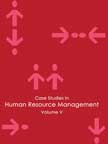Succession Planning at GE |
ICMR HOME | Case Studies Collection Please note: This case study was compiled from published sources, and is intended to be used as a basis for class discussion. It is not intended to illustrate either effective or ineffective handling of a management situation. Nor is it a primary information source. |
||||
The Successor Contd...
The fact that McNerney and Nardelli were taken on as the CEOs of 3M and Home Depot, respectively, within weeks of their losing out to Immelt, was in itself taken by observers as testimony of corporate America's confidence in leaders groomed by GE. Background NoteThe roots of GE can be traced back to Thomas Alva Edison (Edison), the inventor of the incandescent light bulb. Edison set up The Edison Electric Light Company (EELC) in 1872, to conduct experiments on electricity, and in 1879, he invented a carbon-filament lamp and direct current generator for incandescent electric lighting.
He also imposed rigid financial controls to keep the
different units on track. By the end of the century, GE was able to consolidate
its position by licensing its electric bulb technology to other companies. 3] In 1879, Elihu Thomson and E J Houston formed the Thomson-Houston Electric Company. The company was involved in producing electrical equipment and building electrical power stations. |
Case Studies Links:-
Case Studies,
Short Case Studies,
Simplified Case Studies.
Other Case Studies:-
Multimedia Case Studies,
Cases in Other Languages.
Business Reports Link:-
Business Reports.
Books:-
Textbooks,
Workbooks,
Case Study Volumes.



